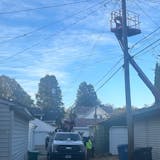WASHINGTON – Most Federal Reserve policymakers expect the U.S. jobless rate will stop plunging and stabilize right around its long-term normal level, a risky forecast given that this apparently hasn't happened in at least a half century.
As the economy healed after recessions, across decades of economic records, the rate dipped well below what analysts consider normal, the so-called natural rate of unemployment.
After the 2001 recession, unemployment spiked to 6.3 percent in 2003 and then turned downward. By mid 2005 it was around its long-run normal rate, estimated at the time to be 5 percent or a little higher. It kept dropping and by December 2006 had hit 4.4 percent.
Fed policymakers are betting history will unfold differently this time. If they get their call wrong and unemployment keeps falling sharply in coming months, they could face pressure to hike interest rates more aggressively than they would like, delivering a potential shock to the economy and financial markets.
"They're taking some big risks," said Jesse Edgerton, a former Fed economist now at JPMorgan, one of several big banks that see the jobless rate dropping more than the Fed expects.
The potential for a misstep hinges on the natural unemployment rate, which is an estimate of the Goldilocks level at which the labor market is neither overheating nor underperforming.
The long-run normal rate cannot be measured directly and economists can only estimate its level, which they presume shifts over time.
Across six decades of economic expansions, the jobless rate regularly drove past leading historical estimates of the natural rate calculated by the Congressional Budget Office.


